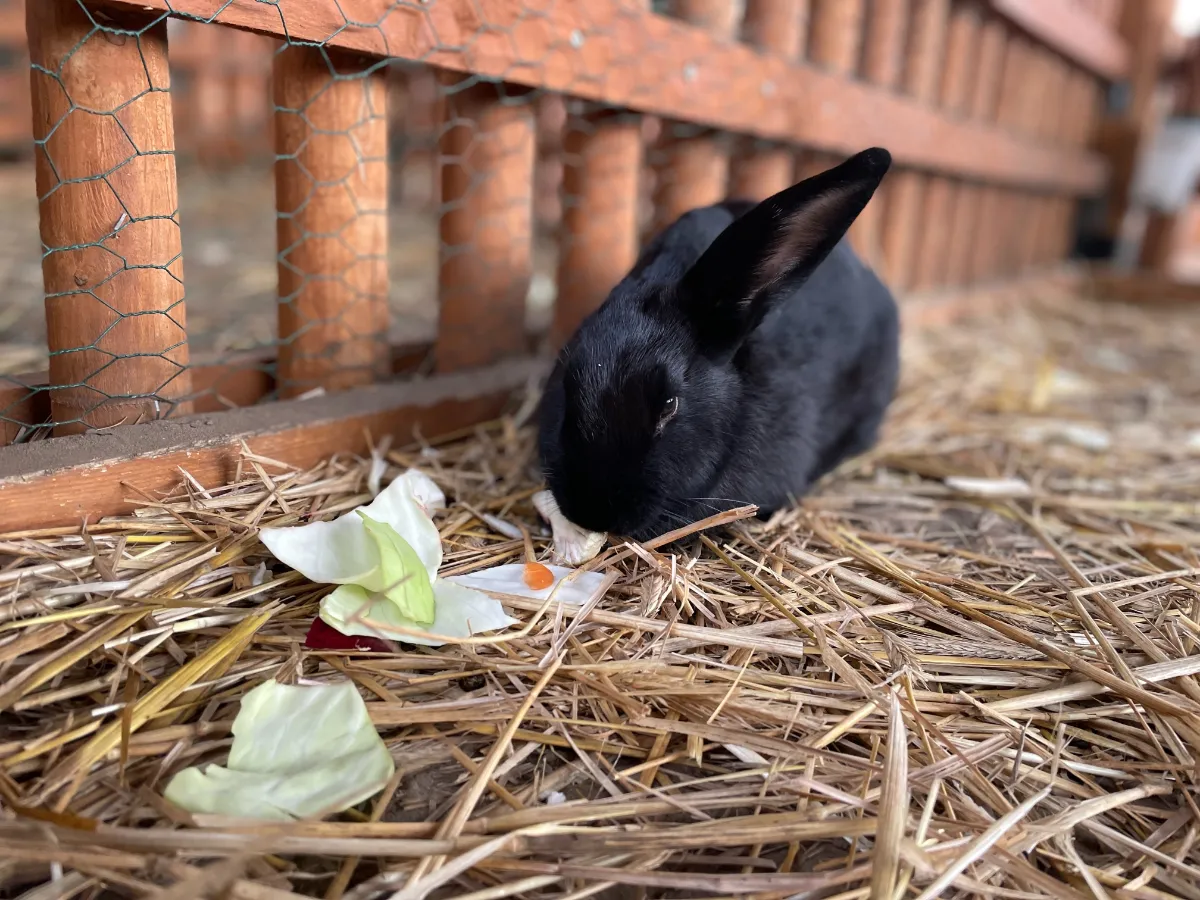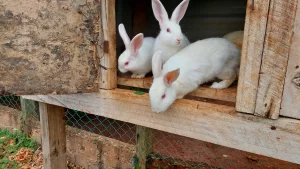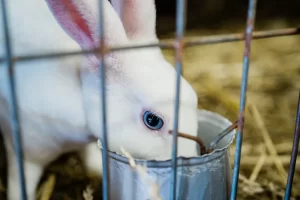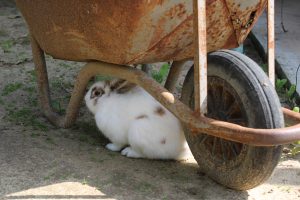If you want to keep your furry friend cozy and warm during the cold winter months, insulating their hutch is essential. Don’t worry, it’s easier than you think! In this article, we’ll guide you through the steps to insulate your rabbit hutch effectively.
We’ll help you assess weak points, choose the right insulation materials, and provide step-by-step instructions to insulate the walls, roof, and floor.
Get ready to make your rabbit’s winter a comfortable one!
In This Article
- 1 Key Takeaways
- 2 Assessing the Rabbit Hutch: Checking for Weak Points
- 3 Choosing the Right Insulation Materials: Options and Considerations
- 4 Preparing the Hutch for Insulation: Cleaning and Repairing
- 5 Insulating the Walls and Roof: Step-by-Step Instructions
- 6 Insulating the Floor: Ensuring Warmth From Below
- 7 Additional Tips and Tricks: Enhancing the Hutch’s Insulation
- 8 Frequently Asked Questions
- 8.1 Can I Use Blankets or Towels as Insulation Materials for the Rabbit Hutch?
- 8.2 How Often Should I Clean and Repair the Rabbit Hutch Before Insulating It?
- 8.3 Are There Any Specific Safety Precautions I Should Take When Insulating the Rabbit Hutch?
- 8.4 Can I Use the Same Insulation Materials for Both the Walls and Roof of the Rabbit Hutch?
- 8.5 Will Insulating the Floor of the Rabbit Hutch Prevent Drafts From Entering the Hutch?
- 9 Conclusion
Key Takeaways
- Inspect the hutch for cracks or gaps and seal any openings to prevent drafts.
- Choose the right insulation material based on factors like durability, effectiveness, and cost.
- Measure and cut insulation panels to fit the walls and roof of the hutch, and regularly check the temperature.
- Insulate the floor with suitable materials, seal gaps and cracks, and consider using a heating pad or straw for additional insulation.
Assessing the Rabbit Hutch: Checking for Weak Points
You should check for weak points in your rabbit hutch to ensure its durability.
Evaluating heat retention and identifying draft sources are essential steps in creating a warm and cozy environment for your furry friends during winter.
Start by inspecting the hutch for any cracks or gaps that may let cold air in. These weak points can be found in areas such as the door, windows, and roof. Use caulk or weatherstripping to seal any openings and prevent drafts.
Additionally, check the insulation inside the hutch. If it’s inadequate, consider adding more to improve heat retention. Remember to pay attention to areas where the hutch meets the ground, as this can be a common source of drafts.
Ensuring a well-insulated and draft-free hutch will help keep your rabbits comfortable and protected from the cold weather.
Choosing the Right Insulation Materials: Options and Considerations
When choosing the right insulation materials for your rabbit hutch, it’s important to consider factors such as durability, effectiveness, and cost. Here are some options to consider:
- Fiberglass: This is a popular choice due to its affordability and effectiveness in trapping heat. However, it can be irritating to the skin and eyes, so proper protective gear is necessary during installation.
- Foam Board: Foam boards are easy to cut and install, providing excellent insulation. They’re also resistant to moisture and pests. However, they can be more expensive compared to other materials.
- Reflective Insulation: This type of insulation reflects heat back into the hutch, making it more energy-efficient. It’s lightweight, easy to install, and can be used in conjunction with other insulation materials.
When installing insulation, ensure that all gaps and seams are properly sealed to prevent drafts. Additionally, consider the specific needs of your rabbits and consult with a veterinarian for guidance.
Preparing the Hutch for Insulation: Cleaning and Repairing
Before insulating your rabbit hutch, make sure to thoroughly clean and repair any damaged areas to ensure optimal insulation performance.
Cleaning the hutch is essential to create a clean and healthy environment for your rabbits. Start by removing all bedding, hay, and waste from the hutch. Use a mild cleaning solution, such as a mixture of water and vinegar, to scrub the surfaces. Pay special attention to corners and crevices where dirt can accumulate. Rinse well and allow the hutch to dry completely before proceeding with the repairs.
Inspect the hutch for any holes, cracks, or loose parts. Use appropriate repairing techniques, such as patching holes with wire mesh or sealing cracks with silicone caulk. Ensure that all repairs are secure and sturdy.
Insulating the Walls and Roof: Step-by-Step Instructions
First, apply insulation to the walls and roof using step-by-step instructions, so that you can effectively keep your rabbit hutch warm during the winter months. Insulation is crucial for maintaining a comfortable temperature for your furry friends. Here’s what you need to do:
- Measure the walls and roof of the hutch.
- Cut insulation panels to fit the measurements.
- Attach the panels to the walls and roof using adhesive or staples.
Evaluating the effectiveness of your insulation is important to ensure your rabbits stay warm. Regularly check the hutch’s temperature using a thermometer and observe your rabbits for signs of discomfort or cold stress. Adjust the insulation if needed.
Insulating the Floor: Ensuring Warmth From Below
To ensure warmth from below, make sure you insulate the floor of your rabbit hutch using suitable materials and techniques.
Insulating the floor is crucial for maintaining a cozy environment for your rabbits during the winter months.
When it comes to heating options, consider using a heating pad designed specifically for small animals. These pads provide a gentle and consistent heat source, ensuring your rabbits stay warm without the risk of overheating.
Additionally, it’s important to prevent moisture buildup in the hutch. Moisture can lead to dampness, which can negatively impact your rabbits’ health. To prevent this, use moisture-resistant materials such as plywood or plastic for the hutch floor.
Make sure to seal any gaps or cracks to prevent drafts and moisture from seeping in.
Additional Tips and Tricks: Enhancing the Hutch’s Insulation
You can also further enhance the insulation of your rabbit hutch by using weatherstripping and caulking to seal any remaining gaps, thereby maximizing warmth and comfort for your furry friends.
Here are some additional tips and tricks to help you with enhancing the insulation of your rabbit hutch:
- Weatherproofing accessories: essential additions
- Install insulated curtains or blankets over the hutch entrance to provide an extra layer of protection against cold drafts.
- Use a thermal cover or blanket to wrap around the hutch during extremely cold weather.
- Consider adding a heat lamp or heat pad specifically designed for small animals to provide additional warmth.
- Creative DIY solutions: thinking outside the box
- Use straw or hay to create a thick layer on the floor of the hutch for insulation.
- Place a piece of thick Styrofoam or insulation board on the back wall of the hutch to prevent heat loss.
- Hang a thick tarp or plastic sheeting on the outside of the hutch to create a wind barrier.
Frequently Asked Questions
Can I Use Blankets or Towels as Insulation Materials for the Rabbit Hutch?
You can use blankets or towels as insulation materials for the rabbit hutch. However, there are alternative insulation materials that may be more effective in keeping your rabbits warm during winter.
How Often Should I Clean and Repair the Rabbit Hutch Before Insulating It?
To keep your rabbit hutch cozy, it’s important to maintain cleanliness and repair any damages regularly. Cleaning frequency depends on your rabbit’s habits, but aim for at least once a week. Schedule repairs as needed to ensure a safe and snug hutch.
Are There Any Specific Safety Precautions I Should Take When Insulating the Rabbit Hutch?
When insulating a rabbit hutch, it’s important to take safety precautions. Make sure to use proper insulation materials that won’t harm your rabbits. Consider their health and well-being throughout the process.
Can I Use the Same Insulation Materials for Both the Walls and Roof of the Rabbit Hutch?
Yes, you can use the same insulation materials for both the walls and roof of the rabbit hutch. However, there are alternative options to consider such as using hay or straw for insulation.
Will Insulating the Floor of the Rabbit Hutch Prevent Drafts From Entering the Hutch?
Insulating the floor of your rabbit hutch will help prevent drafts from entering, ensuring your furry friend stays warm. Consider using alternative insulation materials to effectively reduce heat loss and keep your rabbit cozy.
Conclusion
With a properly insulated rabbit hutch, you can ensure your furry friend stays cozy and warm throughout the winter. Just like how a warm blanket wraps you in comfort on a chilly night, insulation acts as a protective barrier for your rabbit.
By addressing weak points, using suitable materials, and following step-by-step instructions, you can create a snug haven for your pet.
Remember, a well-insulated hutch means a happy and contented bunny.





